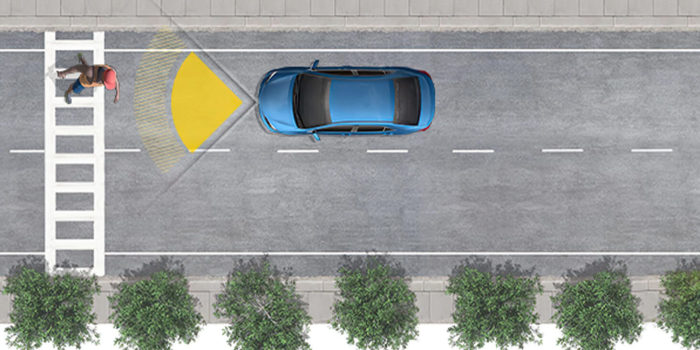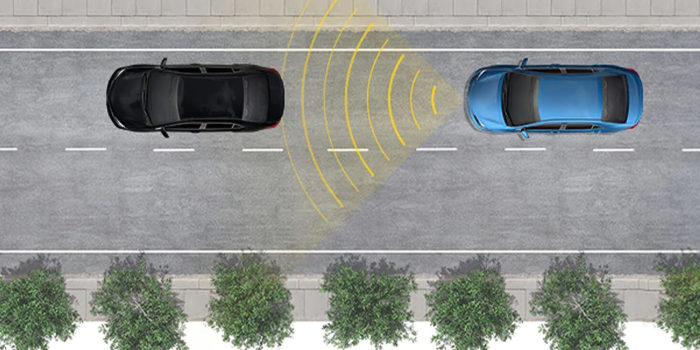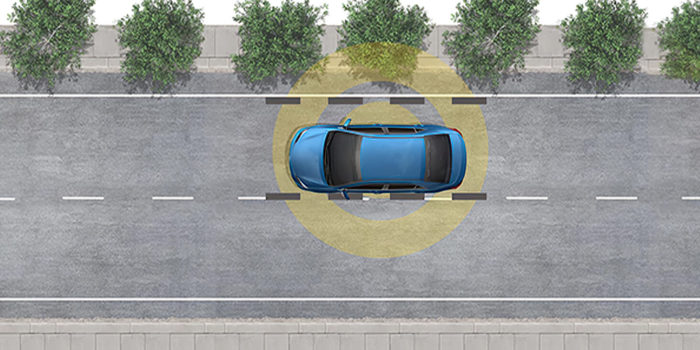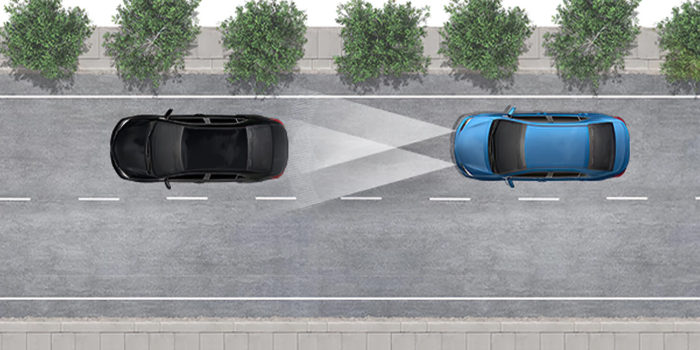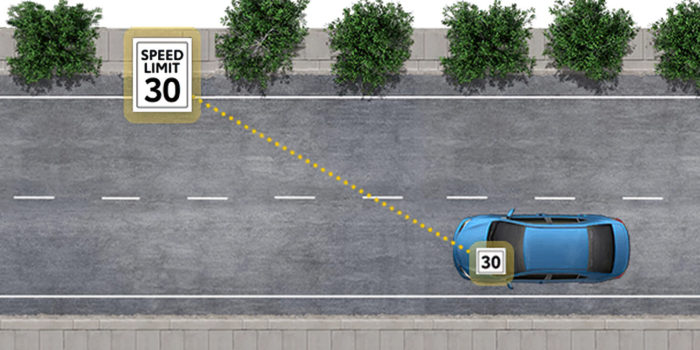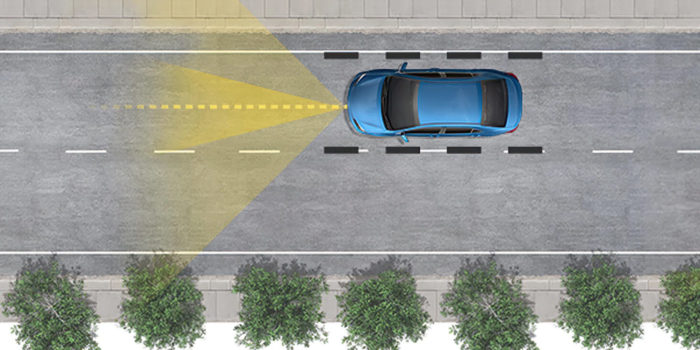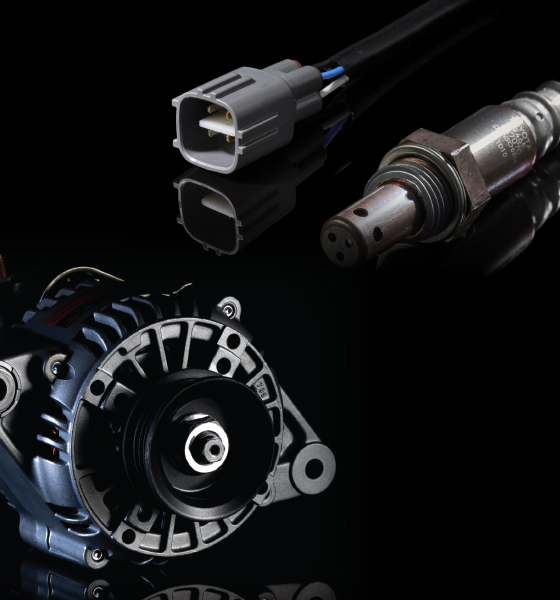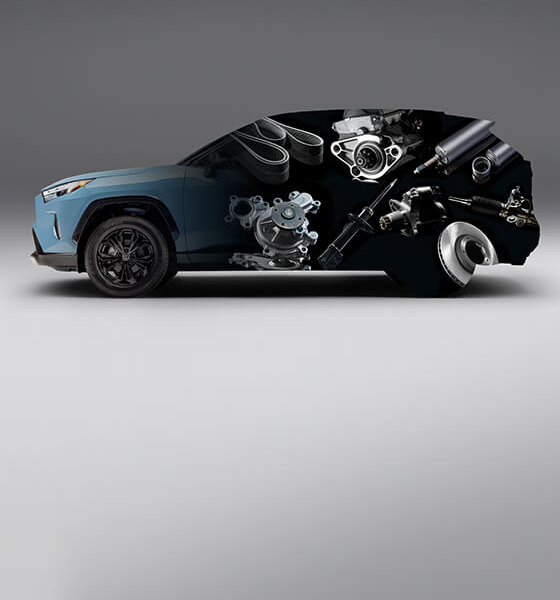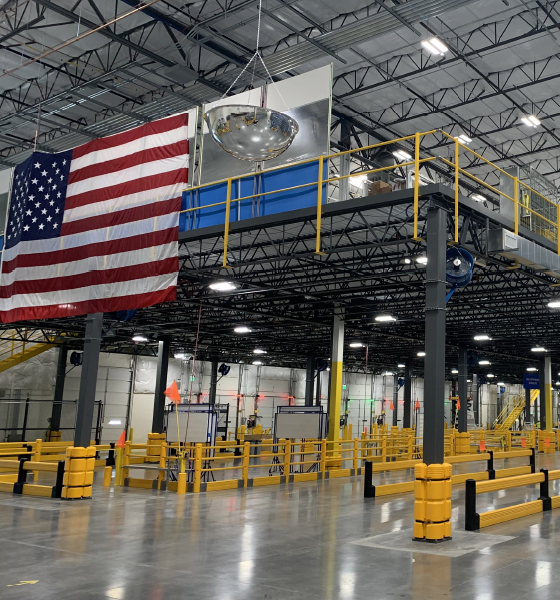
TOYOTA SAFETY SENSE—ADAS WHY REPAIR WITH TOYOTA GENUINE PARTS (Part One)
Toyota’s Safety Sense (TSS)1, Toyota Advanced Driving Assistance Systems (ADAS)1, helps protect the driver and passengers by adding a layer of safety while driving. For ADAS systems to work correctly, such as sensors and cameras, a best practice is to only utilize Toyota Genuine Parts and calibrate ADAS technology based on Toyota specifications noted in various Toyota Technical Bulletins.
This story is divided into two parts: Part one deals with determining if a part should be repaired or replaced, while part two “THE REPAIR — ADAS AND TOYOTA GENUINE PARTS” focuses on the benefits of replacing with Toyota Genuine Parts.
Please see Toyota Safety Sense Disclaimers below.
When a Toyota vehicle with ADAS is in a collision, your top concern is the occupant’s future safety and how to repair the vehicle so it performs as designed if involved in a subsequent crash. Therefore, when a newer Toyota comes into your shop, you need to be aware of the TSS features that came on that vehicle and how your repairs may or may not affect the performance of those systems.
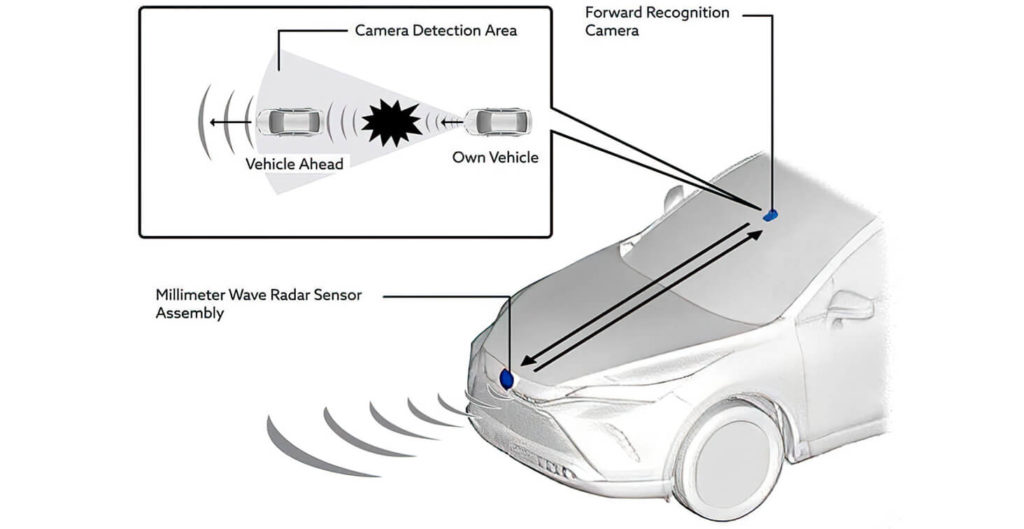
The best place to find out which safety features are on a specific model year, always refer to Toyota’s New Car Features (NCF) manual found on Toyota’s Technical Information System (TIS) website: https://techinfo.toyota.com/ or contact your Toyota dealer.
Below are the number of Toyota vehicles in the last two years that have one or more TSS active safety feature:
- Calendar year 2021, 2,027,786 Toyota vehicles
- Calendar year 2020, 1,837,900 Toyota vehicles
REPAIR VS. REPLACE
With any TSS-equipped vehicle, it’s not just about the damage you can see—you must inspect to see what’s behind the damage or if the damage affected any ADAS sensors or cameras.
When a Toyota comes into your shop damaged, before deciding whether to repair or replace a part, you must first assess which ADAS systems are on the damaged vehicle, how those systems operate, and where the sensors are located. To understand the performance of these safety systems, and to confirm that they are functioning as intended, refer to the New Car Features (NCF) manual in TIS. Once on TIS, enter the model and year of the vehicle, then click on NCF.
For a complete overview on how to navigate Toyota’s NCF, RM and CR tabs as they relate to the TSS safety systems, please watch the video below.
You can also access the Repair Manual (RM) tab or the Collision Damage Repair Manual tab (CR) to locate procedures for measuring mounting locations, performing initializations, calibrations, and operational checks.
WHY A HEALTH CHECK?
Whenever a vehicle comes into your facility, a best practice is to use the Techstream scan tool to perform a health check and retrieve and a report of all Diagnostic Trouble Codes (DTCs) before starting repairs. By identifying DTCs pre-repair, you can create a comprehensive damage analysis report, allowing you to diagnose and address issues before beginning work.
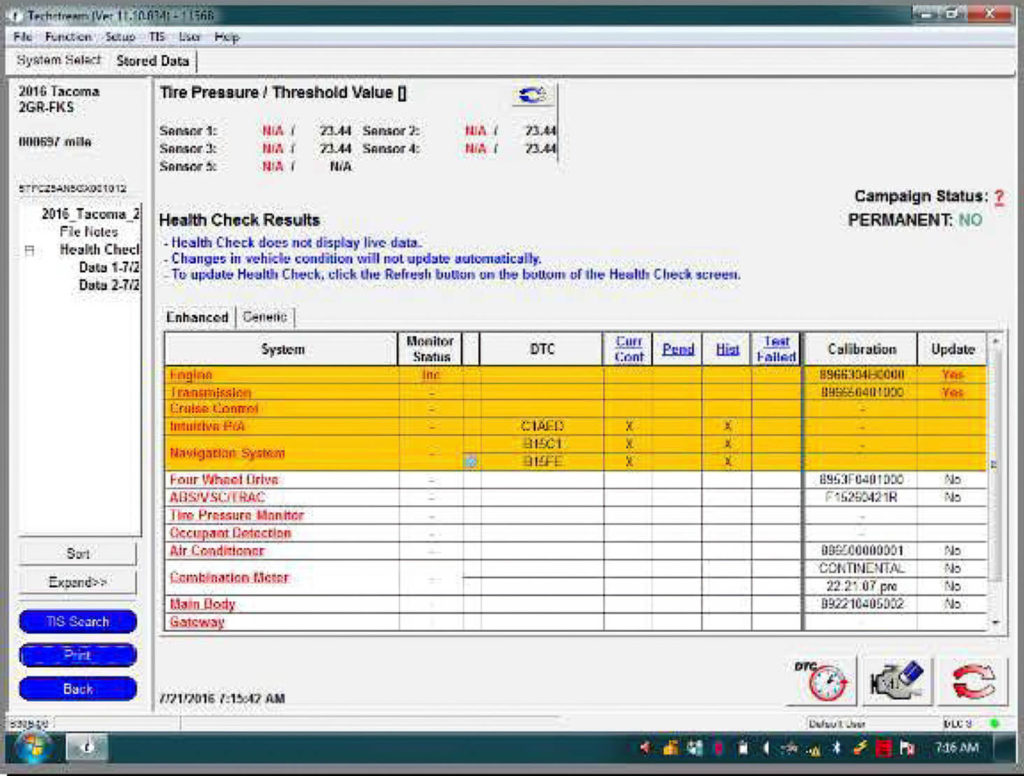
Then, after repairs are performed, conduct another health check prior to returning a vehicle to a customer. For example, in the event of a rear-end collision, just addressing the obvious damage and not performing a health check, you could miss the fact that the impact may have also affected the front-end ADAS systems even though that damage was not visible.3
Visit TIS to learn more about Techstream and Techstream Lite, including how to purchase.
It’s important to perform pre- and post-repair health checks and to complete calibration functions and operational checks as they relate to the Toyota Safety Sense systems.
TIME TO REPLACE?
Once you’re familiar with the technology you’re dealing with, you will see that the advised solution, in some instances, is to replace the part with a Toyota Genuine Part. As an example: if there is damage to a bumper with ADAS and you cannot 100 percent guarantee that the thicknesses of all those coatings will match factory specifications, replace the bumper to help ensure the safety of your customer and your shop.
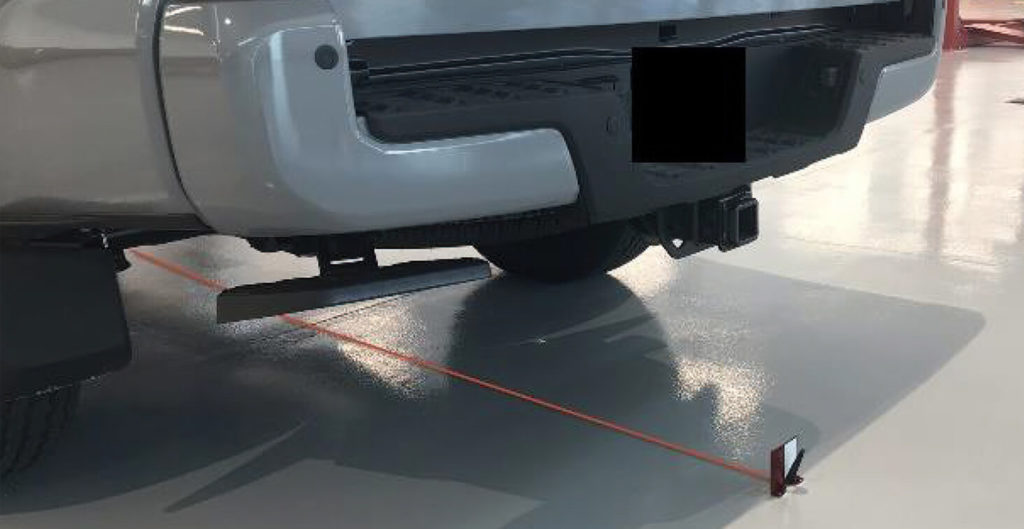
Here’s another example: the Blind Spot Monitor and Rear Cross-Traffic Alert have radar sensors behind the rear bumper that send out radio waves to detect vehicles in the area. When a vehicle with a Blind Spot Monitor or Rear Cross Traffic Alert is in an accident and the bumper cover is damaged near a sensor, the repair of the cover can affect the performance of those systems. Additionally, subletting the repair out for reconditioning, using repair filler material and primers, or even repainting the damaged area multiple times will add thickness, which can compromise the performance of how the sensor detects objects.
CONSIDER THE CONSEQUENCES
An improper or inadequate repair could be caused by an error during the repair process, using the wrong parts, a calibration mistake, or not following all the suggested repair procedures, like scanning for electrical system faults when the vehicle first arrives at your facility.
The onboard vehicle electrical systems on Toyota vehicles are designed to control and communicate with the engine, drivetrain, body electrical, navigation, audio, handling, and safety systems. In the event of a collision, electronic control modules, actuators, sensors, or wiring can be damaged. Damage related to these systems may cause them to not perform properly during future operating conditions including subsequent collisions.

Discover the advantages of replacing damaged vehicle parts with Toyota Genuine Parts when repairing Toyota’s ADAS.
TSS 2.0 enhances this system with the addition of low-light detection for pedestrians plus daytime detection of bicycles.
DISCLAIMERS:
This training is just one resource available to Dealers and their associates. Collision Repair Centers are free to use or not use this resource. Of course, our dealers are responsible for all employment decisions relating to their employees including all recruiting, hiring, retention, development, discipline, and termination decisions.
- Toyota Safety Sense™ effectiveness is dependent on many factors including road, weather and vehicle conditions. Drivers are responsible for their own safe driving. Always pay attention to your surroundings and drive safely. See Owner’s Manual for additional limitations and details.
- The TSS Pre-Collision System is designed to help avoid or reduce the crash speed and damage in certain frontal collisions only. It is not a substitute for safe and attentive driving. System effectiveness is dependent on many factors, including road, weather, and vehicle conditions. See Owner’s Manual for additional limitations and details. Feature availability may vary by vehicle and trim.
- Dynamic Radar Cruise Control (DRCC) is designed to assist the driver and is not a substitute for safe and attentive driving. System effectiveness is dependent on many factors, including road, weather, and vehicle conditions. Feature availability may vary by vehicle and trim.
- Lane Departure Alert (LDA) is designed to read visible lane markers under certain conditions and provide visual and audible alerts when lane departure is detected. It is not a collision-avoidance system or a substitute for safe and attentive driving. System effectiveness is dependent on many factors, including road, weather, and vehicle conditions.
- Automatic High Beams operate at speeds above 25 mph. Factors such as a dirty windshield, weather, lightning, and terrain limit effectiveness, requiring the driver to manually operate the high beams. Feature availability may vary by vehicle and trim.
- Lane Tracing Assist (LTA) is designed to read visible lane makers and detect other vehicles under certain conditions. It is only operational when DRCC is engaged.
- Do not rely exclusively on Road Sign Assist (RSA). It is not a substitute for safe and attentive driving. System effectiveness is dependent on many factors, including road, weather, and vehicle conditions. Feature availability may vary by vehicle and trim
